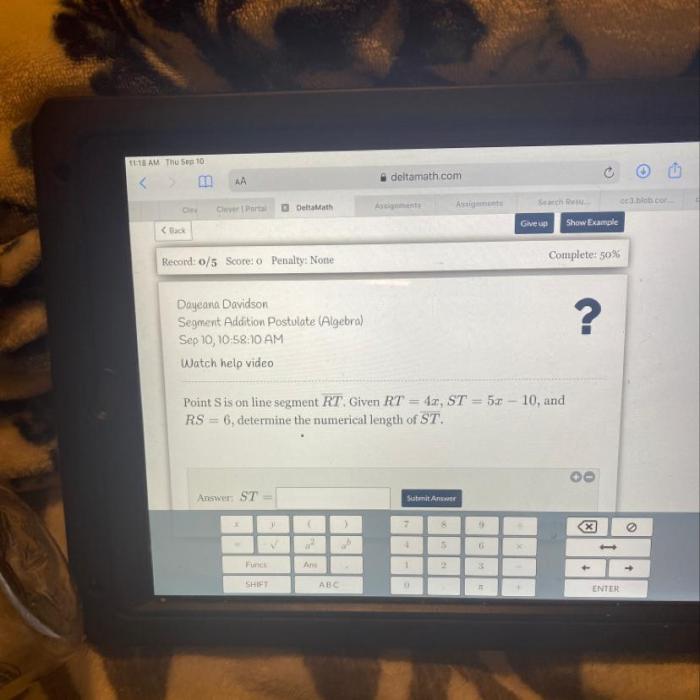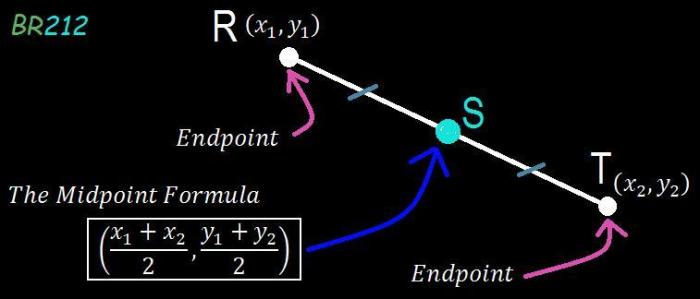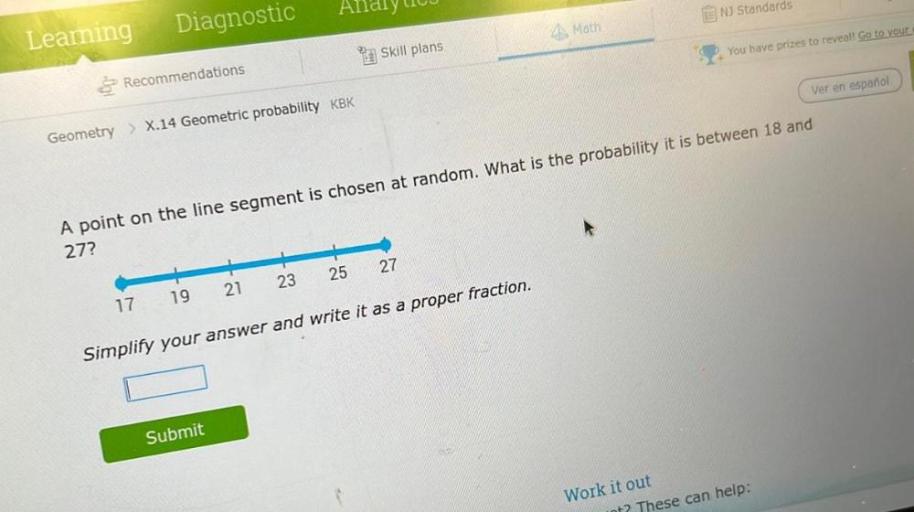Point s is on line segment rt – Point S on line segment RT embarks on an intriguing journey, revealing the fascinating world of geometry and measurement. This exploration delves into the conditions that define point S’s position on line segment RT, uncovering geometric properties and implications that shape our understanding of space.
Unraveling the intricacies of line segments and points, we uncover the significance of distance, collinearity, and betweenness. Point S becomes a pivotal player in dividing line segment RT, inviting us to explore the relationships between segment lengths and their geometric consequences.
Line Segment RT and Point S

A line segment is a straight line with two endpoints. It is a part of a line that is bounded by the endpoints. Line segments are often denoted by the endpoints, such as RT.
Point S is a point that lies on the line segment RT. This means that point S is on the straight line that connects points R and T, and it is between points R and T.
Point S is located on line segment RT, and if you’re looking for more information on this topic, check out tym the trainer answer key . This comprehensive resource provides detailed explanations and examples to help you better understand the concept of points on line segments.
Points on, Inside, or Outside a Line Segment
A point can lie on, inside, or outside a line segment. A point lies on a line segment if it is one of the endpoints or if it is on the straight line that connects the endpoints. A point lies inside a line segment if it is between the endpoints and not on the line segment itself.
A point lies outside a line segment if it is not on the line segment or between the endpoints.
Conditions for Point S to Lie on Line Segment RT

For point S to lie on line segment RT, two essential conditions must be satisfied:
- Collinearity:Point S must lie on the same straight line as points R and T.
- Betweenness:Point S must lie between points R and T. This means that when moving from point R to point T, point S must be encountered before reaching point T.
These conditions ensure that point S is not located outside the line segment RT and that it divides the line segment into two distinct parts.
Role of Distance, Point s is on line segment rt
The distance between points R, S, and T plays a crucial role in determining the position of point S relative to line segment RT. If the distance from point S to point R is equal to the distance from point S to point T, then point S lies at the midpoint of line segment RT.
Betweenness
The concept of betweenness is fundamental in understanding the position of point S on line segment RT. Point S is said to be between points R and T if it satisfies the following condition:
For any point P on line segment RT, if P is between R and S, and P is also between S and T, then P must be the same point as S.
Geometric Properties and Implications: Point S Is On Line Segment Rt
When point S lies on line segment RT, it results in several important geometric properties and implications:
Firstly, the line segment RT is divided into two distinct segments: RS and ST. Point S acts as the dividing point, creating a partition of the line segment.
Relationship between Segment Lengths
The lengths of the segments created by point S are related in specific ways:
- The sum of the lengths of segments RS and ST is equal to the length of the original line segment RT: RS + ST = RT.
- The ratio of the lengths of segments RS and ST is often expressed as a ratio of two numbers, such as RS:ST or ST:RS.
- The specific ratio of segment lengths depends on the exact location of point S along line segment RT.
Applications in Geometry and Measurement

The concept of a point S lying on a line segment RT finds numerous applications in geometry and measurement.
In geometry, it is used to:
Finding Midpoint
- Find the midpoint of a line segment: The midpoint of a line segment is the point that divides the segment into two equal parts. To find the midpoint, we can use the concept of point S on line segment RT.
We take the line segment RT as the x-axis and place point S at the midpoint. Then, the coordinates of point S will be the average of the x-coordinates of points R and T.
Constructing Perpendicular Bisectors
- Construct perpendicular bisectors: A perpendicular bisector of a line segment is a line that passes through the midpoint of the segment and is perpendicular to it. To construct a perpendicular bisector, we can use the concept of point S on line segment RT.
We take the line segment RT as the x-axis and place point S at the midpoint. Then, we draw a line through point S that is perpendicular to the x-axis. This line will be the perpendicular bisector of the line segment RT.
In measurement, the concept of point S on line segment RT is used to:
Determining Distances and Ratios
- Determine distances: The distance between two points on a line segment can be found using the concept of point S on line segment RT. We take the line segment RT as the x-axis and place point S at one of the points.
Then, the distance between point S and the other point can be found by subtracting the x-coordinate of point S from the x-coordinate of the other point.
- Determine ratios: The ratio of two line segments can be found using the concept of point S on line segment RT. We take the two line segments as the x- and y-axes, respectively, and place point S at the intersection of the two segments.
Then, the ratio of the two line segments is equal to the ratio of the x-coordinate of point S to the y-coordinate of point S.
Illustrative Examples

To solidify the understanding of the conditions for point S to lie on line segment RT, we present a table of illustrative examples with clear diagrams.
Point S Lies on Line Segment RT
- Example 1:Point S is the midpoint of line segment RT.

- Example 2:Point S divides line segment RT in a 3:2 ratio, with S being closer to R.

Point S Does Not Lie on Line Segment RT
- Example 1:Point S is located on the same line as RT but outside the segment, closer to R.

- Example 2:Point S is located on a line parallel to RT but not on the same line.

Quick FAQs
What are the necessary conditions for point S to lie on line segment RT?
Point S must satisfy both distance and collinearity conditions. It must be equidistant from points R and T and lie on the same straight line connecting them.
How does point S divide line segment RT?
Point S partitions line segment RT into two segments: RS and ST. The lengths of these segments are determined by the position of point S along the line.
What are some real-world applications of the concept of point S on line segment RT?
This concept finds applications in finding midpoints, constructing perpendicular bisectors, and determining distances and ratios in geometry and measurement.